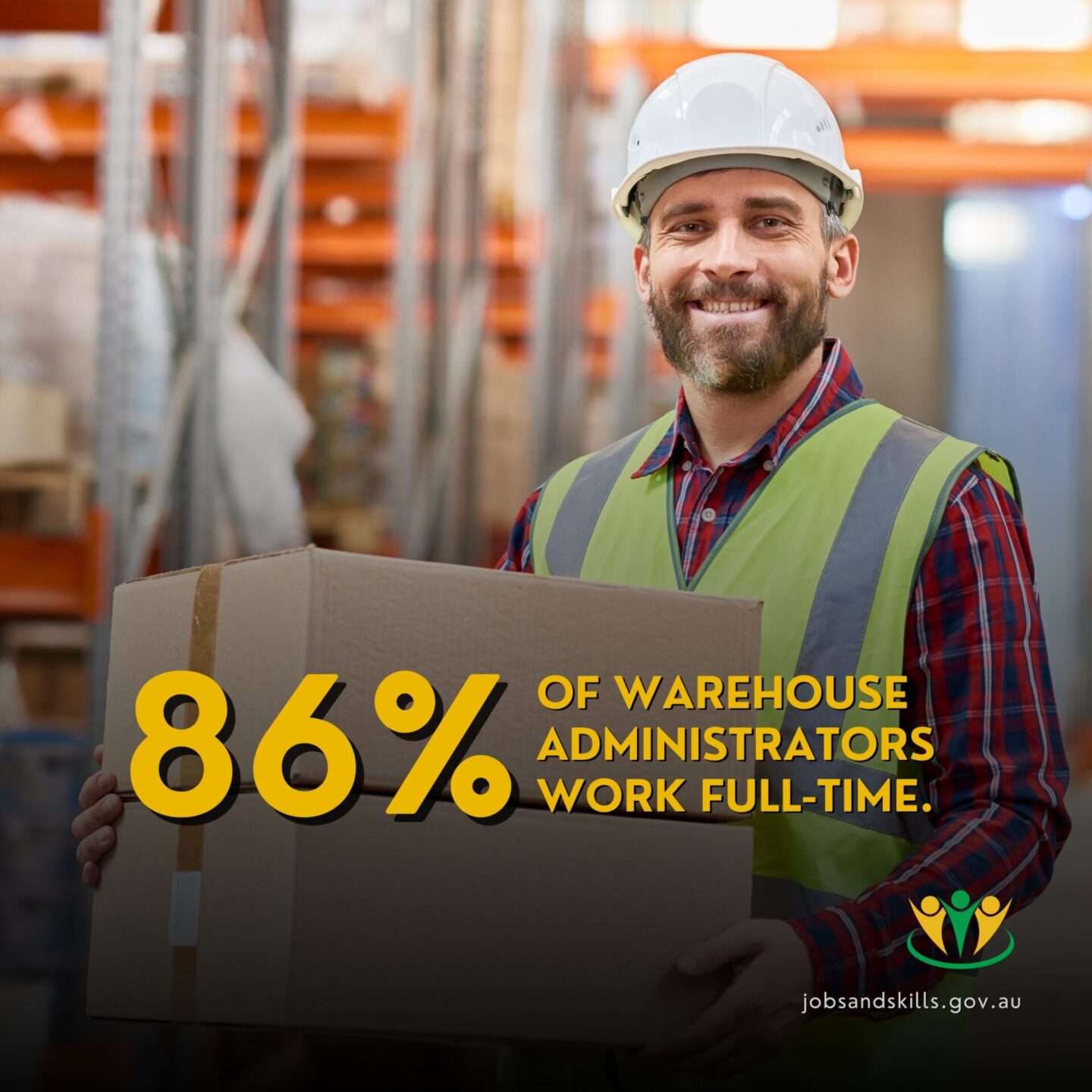Almost every product you purchase has spent time in a warehouse.
Warehouses are the hidden link between manufacturers, retailers, and customers, ensuring goods are stored safely, organised effectively, and delivered on time.
Without warehousing, the Australian workforce would grind to a halt.
Whether you’re a seasoned warehouse worker, looking for change in careers, or are just starting out in the industry, it’s important to understand what a warehousing job really involves.
The following blog breaks it down for you! From the history of warehousing to the types of jobs you’ll find, we’ll explore the reality of working in a warehouse and discuss some key things every warehouse worker should know.


Let’s explore the history of warehousing!
A warehouse (or storeroom) is simply a building or structure used to store goods. With a definition as broad as this, it’s no surprise that the concept of “warehousing” has existed for thousands of years. However, what you envision as a red-bricked, concrete, commercial warehouse used to look very different.
Although, the term “warehouse” was not formally adopted at the time, the existence of warehousing dates all the way back to the Middle Ages. Ancient civilizations like the Egyptians and Romans built large storage facilities to keep their food, materials, and supplies safe from the elements and unwelcome visitors.
It was years later, during the Industrial Revolution of the 18th century when warehouses evolved to become more than a simple storeroom or house. This is when warehousing became increasingly important in supporting the mass production of goods. Fuelled by the industrial revolution, large corporations, businesses, and factories required larger facilities to store their goods before shipping them out. As a result, most warehouses were built next to docks or railway lines to allow for easy transportation.
Fast forward to today, and warehouses have evolved into massive, technologically advanced facilities that not only store products but also manage stock, package orders, and support e-commerce businesses with online orders and distribution.
In Australia, warehousing is a crucial part of several core industries including retail, food distribution, and manufacturing. As we continue to see a growth in e-commerce and online shopping, the Transport, Postal, and Warehousing industry continues to shine.
Who works in a warehouse?
Inside every efficient warehouse facility is a team of skilled workers who are responsible for keeping the supply chain moving. Common roles include:
- Pickers and Packers: Order Pickers are essential players in warehousing. They are responsible for selecting and preparing items for shipment or reallocation. They need to make sure that all orders are accurately picked, packed, and ready for dispatch.
- Forklift Operators: Forklift Operators ensure the smooth and safe movement of heavy and bulk materials. With specialised training and licencing, forklift drivers have the primary responsibility of operating a forklift/s to transport, stack, and organise raw materials or products.
- Storepersons: Storepersons (also referred to as warehouse workers or store clerks) are responsible for ensuring that products are received, organised, and dispatched as expected.
- Machine Operators: Machine Operators are required to set up, monitor, and maintain machines, playing a critical role in the production process. They are responsible for ensuring that machinery operates efficiently and effectively to produce goods and create quality products.
- Inventory Controllers: Inventory Controllers are responsible for managing and maintaining accurate records of a company’s product stock or tangible inventory. They make sure a business has access to an adequate amount of product to meet demands without overstocking.
- Warehouse Managers: Warehouse Managers are responsible for motivating teams to improve productivity, meet deadlines, reduce costs, and meet customer demands. From receiving materials to preparing products for dispatch, they are responsible for managing the process in a safe and efficient manner.
No matter your role, warehouse efficiency comes down to three things: teamwork, safety awareness, and attention to detail.
Interested in becoming a Forklift Driver? Get Forklift Certified: 5 Reasons to Become a Forklift Operator in Australia
How can I get a job in warehousing?
According to Jobs and Skills Australia, the Transport, Postal and Warehousing industry has continued to grow steadily over the last 20 years. This means that the demand for workers also continues to grow.
Here’s how you can find work:
- Register with an agency: Labour hire agencies like Staff Australia are regularly looking for staff to fill roles in warehousing. Agencies are available to offer expertise, market knowledge, and provide you with a network of exclusive opportunities that you will not be able to find on your own. Register with us!
- Build an effective resume: Your resume should summarise your education, work experience, accomplishments, skills, and personal details. Never underestimate the power of a well-written resume.
- Get the necessary qualifications: You must obtain all necessary certificates and licences, especially if you work in a high-risk environment. Having a forklift licence or a White Card can make you more employable.
- Be prepared and job-ready: If you are working in an industrial or high-risk environment, you are likely to require Personal Protective Equipment (PPE) such as steel cap boots, a safety jacket, and gloves.
Are you a job seeker looking for a job in warehousing? We’re here to help! Register with Staff Australia.
5 Things Every Warehouse Worker Should Know:
1. Safety always comes first.
When working in a warehouse, following site safety procedures is a critical part of your job. Workers are often required to work near forklifts, pallet jacks, conveyor belts, and heavy stock, which can sometimes lead to injury. When working in a warehouse, you must follow safety procedures, wear the right protective gear, and stay alert at all times.

2. The secret is fitness.
Working in a warehouse can be physically demanding. Many workers will be on their feet for hours on end. They are often required to lift and carry heavy products, bend over repetitively and operate heavy machinery. By staying fit, regularly stretching, and using the right lifting techniques workers can reduce the likelihood of injury.
3. Teamwork makes the dreamwork.
Warehouse work is not a one-man job. It is important that everyone works together to meet company deadlines and operational goals. Every staff member, from order pickers to forklift drivers and supervisors, play an important role in supporting the team.
4. Keep your eye on the prize. Pay attention!
In a warehouse, small mistakes can have big consequences. Picking the wrong item, sending out the wrong quantity, or misplacing stock can cause major delays, upset customers, and cost the business money. Pay close attention to the details!
5. There are endless opportunities to succeed.
Many warehouse supervisors, team leaders, and even operations managers started out as casual pickers or packers. By showing up on time, doing your job properly, being reliable, and showing interest in learning new skills (like forklift driving or stock control systems), you can open doors to better positions with higher pay and more responsibility.

Are you looking for your next role in warehousing? It all starts at Staff Australia!
The future of warehousing appears bright and remains strong. With industry growth across Australia, joining the warehousing sector offers not just a job, but a pathway to long-term career development.
Job searching is stressful. But you shouldn’t feel the need to tackle it alone. It costs $0 to consult with a recruiter at Staff Australia.
Working with a recruiter can make all the difference in your job search. If you are on the hunt for your next role, we encourage you to explore our job listings or call 1300 178 233 to find out more.


